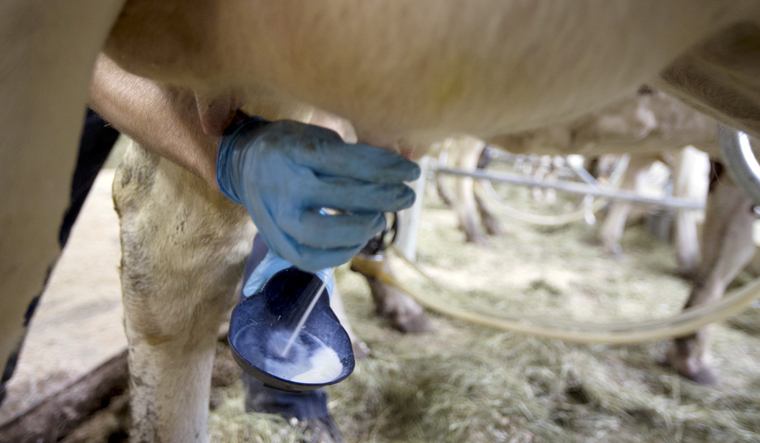India is already the largest milk producing country, with total output touching 165.44 million tonne (MT) in 2016-17. A study projects that a near normal monsoon, declining fodder costs and likely improvement in milch yields will push the country's milk production further to 186 million tonnes in the current financial year ending March 2019.
Over the last decade (FY2007-2017), average annual milk production rose close to 5 per cent year-on-year, which was 86 basis points (0.86 per cent) higher than the growth in the previous decade ending FY2007, according to Fitch Group-owned India Ratings and Research.
In value terms, milk production in the country has risen at a compounded rate of around 14 per cent year-on-year over 2011-12 to 2015-16 to Rs 5.5 lakh crore, and that is further seen growing at over 11 per cent year-on-year to Rs 7.45 lakh crore in 2018-19.
“India, on an average, produced 53.1 MT more milk than the second largest milk producer (US) during 2012-2016 and is expected to grow nearly twice as fast as the global milk production growth during 2019-2026,” said analysts Devika Malik and Shubha Bharadwaj.
The United Nations and Organisation For Economic Cooperation and Development had earlier predicted that by 2026, India will overtake the European Union, too, in terms of milk produced and its output will be one-third over that of the EU.
Apart, from favourable weather conditions and falling cost of inputs like cattle feed, demand for value added dairy products has also been outpacing spending on other essentials, helped by rising disposable incomes, rapid urbanisation and shift in consumer preferences away from fizzy drinks, the study points out.
“Consumer preferences for nutritive value added dairy products such as chaas, lassi, milkshakes and yogurt are replacing the demand for aerated drinks and high calorie snacks. Over 2014-2017, per capita consumption of fresh dairy products grew between 5-6 per cent to about 86 kilograms,” said the India Ratings analysts.
Despite the record milk production, India is not a major exporter, as much of what is produced is consumed domestically. Furthermore, milk prices fell over 2015-2016 in the global market, and although prices have recovered over last few months, they are far from current domestic prices, making exports unattractive.
While India is a net dairy exporter, exports contributed to just 8 basis points to the country's overall export basket.
Cost of cattle feed have fallen, and are likely to remain stable this year, with a near normal monsoon prediction and therefore, milk procurement prices, too, may not move much from current levels. Payment to farmers account for 80 per cent of a dairy cooperative's sale price.
Between FY2012 and FY2017, private players saw their revenue grow 10 per cent, while margins were in the range of 7-10 per cent, helped by product mix, which also included a strong focus on value added dairy products. In contrast, margins of those dairy cooperatives, whose product mix was dominated largely by raw milk, were only around 2 per cent, according to the India Ratings research.


